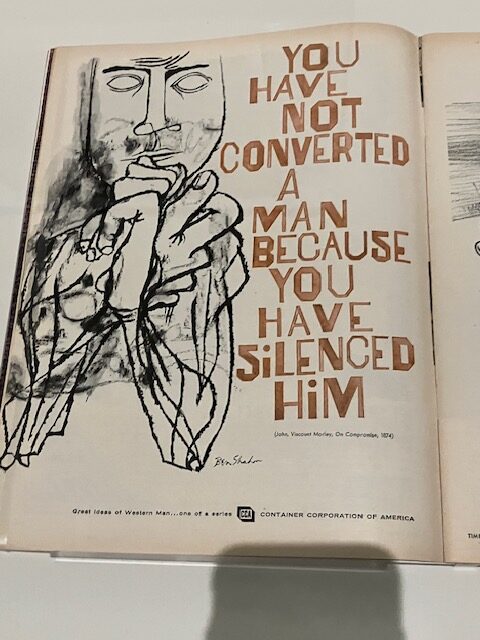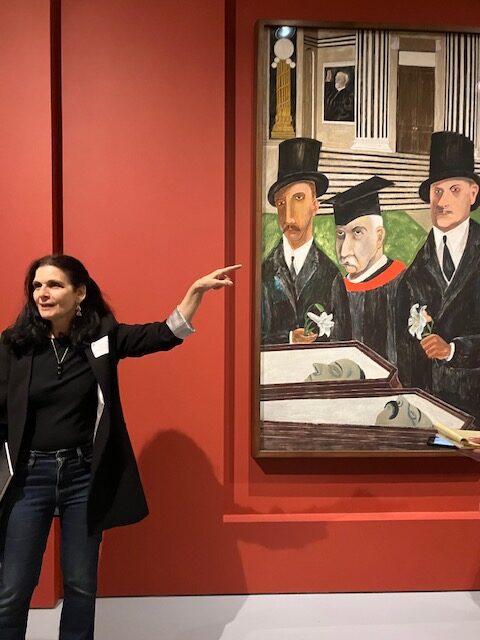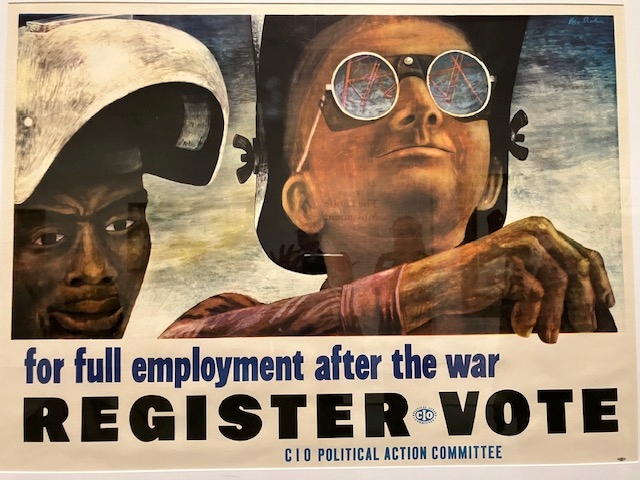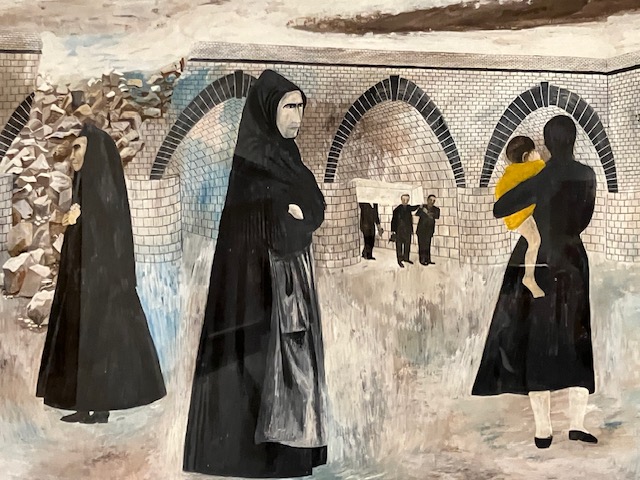The Jewish Museum’s exhibit, Ben Shahn, On Nonconformity chronicles 50 years of U.S. history from the point of view of a social-realist artist while resonating powerfully in today’s struggle for social justice through what he knew best: the critical role of art.
The first retrospective of his work since 1976, “Ben Shahn is one of the great American artists of the twentieth century who believed in the value of dissent and the essential function of art in the life of a democratic society,” said Dr. Stephen Brown, Jewish Museum curator.
The exhibition draws its title from Ben Shahn’s credo of “nonconformity,” which the artist asserted as an indispensable precondition for both significant artistic production and all great societal change.

Born to Jewish, anti-czarist parents in Russia, Shahn immigrated to the U.S. with his family in 1906 and grew up in Williamsburg, Brooklyn. Trained as a lithographer, he mastered drawing, engraving, and typography before expanding and experimenting across a vast array of mediums. He traveled to North Africa, Italy and France.
A painter, photographer, printmaker and muralist, who also had a very successful career as an illustrator and graphic designer, Shahn cut his teeth assisting Diego Rivera on the ill-fated Rockefeller Center mural, and eventually lived in France and Italy and traveled to Tunisia.

He worked with the WPA, the CIO labor union, photographed for the Farm Security Administration, painted frescoes and a mural still on view at the Social Security Administration building in Washington, D.C. Almost every state of the union has at least one of his works on view publicly or privately. Likewise, his commercial work appeared in Playboy, The Nation, American Heritage magazine and he was the graphic designer for CBS.
Shahn seemed to have been engrossed by every pressing issue and scandal of his time–as illustrated through the opening memorable work: The Passion of Sacco & Vanzetti. Sensitized as he was to the immigrant experience, he illustrated the unjust treatment of two victims of ethnic prejudice within the judicial system – Nicola Sacco and Bartolomeo Vanzetti, executed in 1927— proving that racial profiling is not a new concept. On the heels of that painting is the Tom Mooney series that reflect emphatic lines and expressive colors.
The exhibit is divided into seven sections: Art and Activism, A New Deal for Art, The Labor Movement, War and Its Aftermath, Age of Anxiety: The Cold War, The Struggle for Civil Rights, and Spirituality and Identity, from the Great Depression to the Red Scare to Civil Rights and the Vietnam War through 175 meticulously curated works, on loan from more than 30 museums, galleries and private collections.
James S. Snyder, the Helen Goldsmith Menschel Director stated, “Ben Shahn, On Nonconformity showcases the extraordinary work of a pioneering artist whose commitment to social justice across ethnic, class, and racial divides could not have greater relevance today.”
This foundational thread of “nonconformity” and his dedication to the First Amendment runs through his oeuvre, as he investigates unemployment, discrimination, authoritarianism, and threats to freedom of expression, while championing labor, civil, and human rights. Shahn’s later spiritual work embraces the Hebrew language, biblical stories, the need to perpetually question, and his exploration of the tradition of social justice activism within Jewish culture.

Ben Shahn, On Nonconformity was originally organized by the Museo Nacional Centro de Arte Reina Sofia in Madrid in 2023. Dr. Laura Katzman, the guest curator in Madrid and at the New York show said, “The exhibition invites visitors to examine the issues that were important to Shahn through our modern understanding of social justice. It also uplifts the richness and complexity of his aesthetic, which drew inspiration from various artistic movements in the postwar era — from abstract expressionism to conceptual art — and capitalized on the reach of mass media, raising commercial production to a high art.”
On view through October 12, 2025. https://thejewishmuseum.org/












